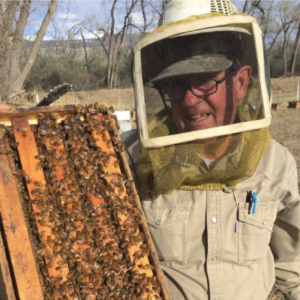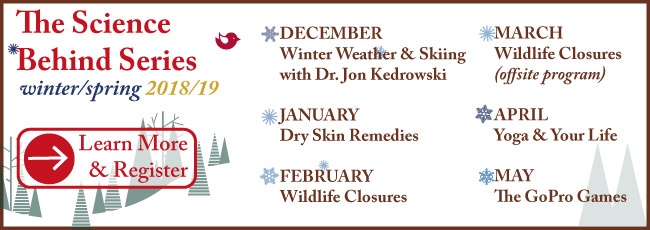 Have you ever wondered how something works or how something was made? In the monthly Science Behind series, we partner with a guest presenter to explore a large variety of interesting topics. The Science Behind series offers opportunities for adults to apply new knowledge and skills to everyday life, while having fun!
Have you ever wondered how something works or how something was made? In the monthly Science Behind series, we partner with a guest presenter to explore a large variety of interesting topics. The Science Behind series offers opportunities for adults to apply new knowledge and skills to everyday life, while having fun!
** This Science Behind event took place in December, 2016 **
The Science Behind Honey Bees & Pollination
One of the most familiar insects in the world is the Honey Bee. This member of the insect order Hymenoptera is essential to the human and natural world. No single animal species plays a more significant role in producing the fruits and vegetables that humans require to stay alive. Commercial bees raised on farms for pollination purposes along with wild bees are responsible for pollinating an estimated 80% of all food crops in the United States. Not to mention the sticky sweet gift of honey!
Join Walking Mountains Science Center with special guest Ann Luark from Luark High Country Honey for The Science Behind Honey Bees on Wednesday, December 14 at 6:30pm. We will discuss the survival challenges that Honey Bee populations face and the global implications of their disappearance. Ann will speak to her family’s own honey operation and inspire amateur beekeepers and gardeners to enhance both bee habitats and bee health. Participants will learn to make delicious snack recipes featuring honey with plenty to take home and share! With increasing interest and awareness in the profound importance of nurturing a much larger bee population globally, the positive impact for both humanity and the planet will prove immeasurable.
Perhaps the biggest foreboding danger facing humans is the loss of the global Honey Bee population. The consequence of a dying bee population impacts us at the highest levels on our food chain, posing an enormously grave threat to human survival. More than 130 fruits and vegetables that make up a nutritious diet are cross pollinated by Honey Bees. Honey Bees migrate to various regions of the country to pollinate an estimated $40 billion worth of the nation’s agricultural produce each year. This means that every third bite of food we eat comes as the result of bees and other pollinators. In the last half decade alone 30% of the national bee population has disappeared and nearly a third of all bee colonies in the U.S. have perished. The great scientist Albert Einstein once prophetically remarked, “Mankind will not survive the honeybees’ disappearance for more than five years.”
Luark High Country Honey has been pollinating orchards on the Western slope for over 40 years. Ann Luark has been a part of the operation for the past 20 years. Caring for the 300 to 400 hives housing 20,000 to 90,000 inhabitants, pollinating, taking off, bottling, and selling the honey are just a few of her daily tasks on the ranch. Ann is excited to share her knowledge and experience with others to educate and inspire stewardship of our local Honey Bee populations.
IF YOU GO...
What: The Science Behind Honey Bees
When: Wednesday, December 14 | 6:30 pm - 8:30 pm
Where: Walking Mountains Science Center
Cost: $10/person
Learn more about upcoming Science Behind topics.








